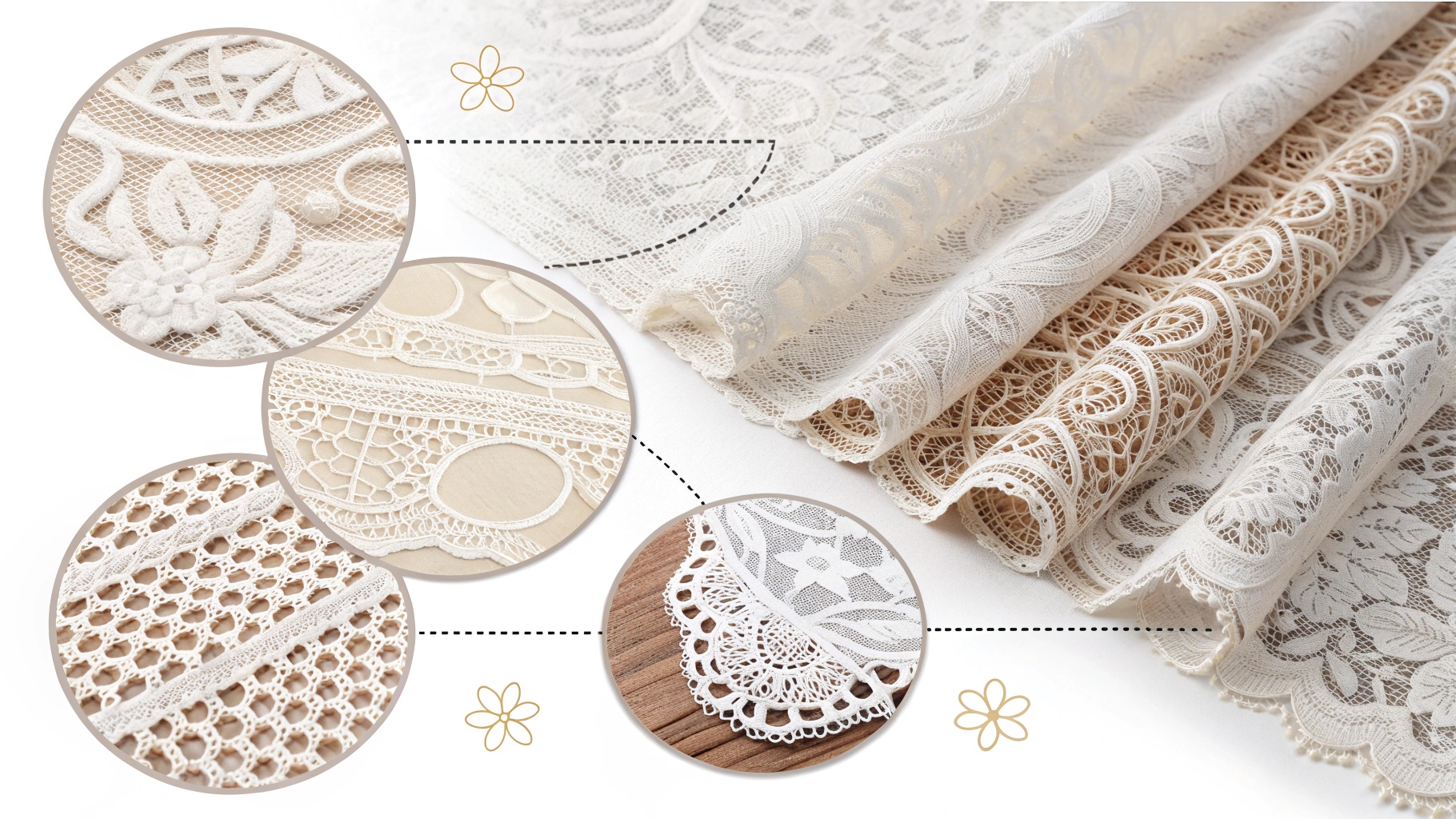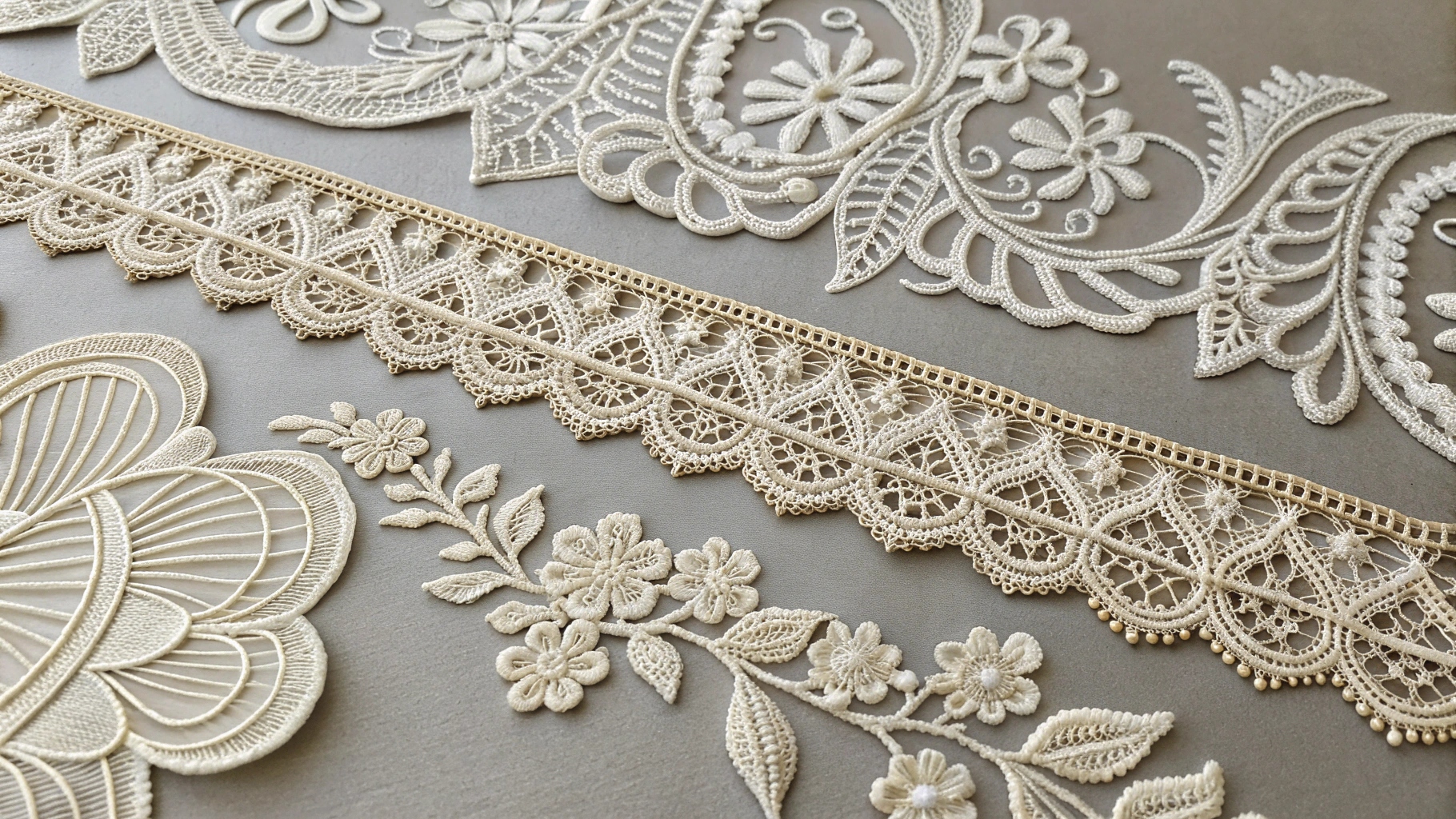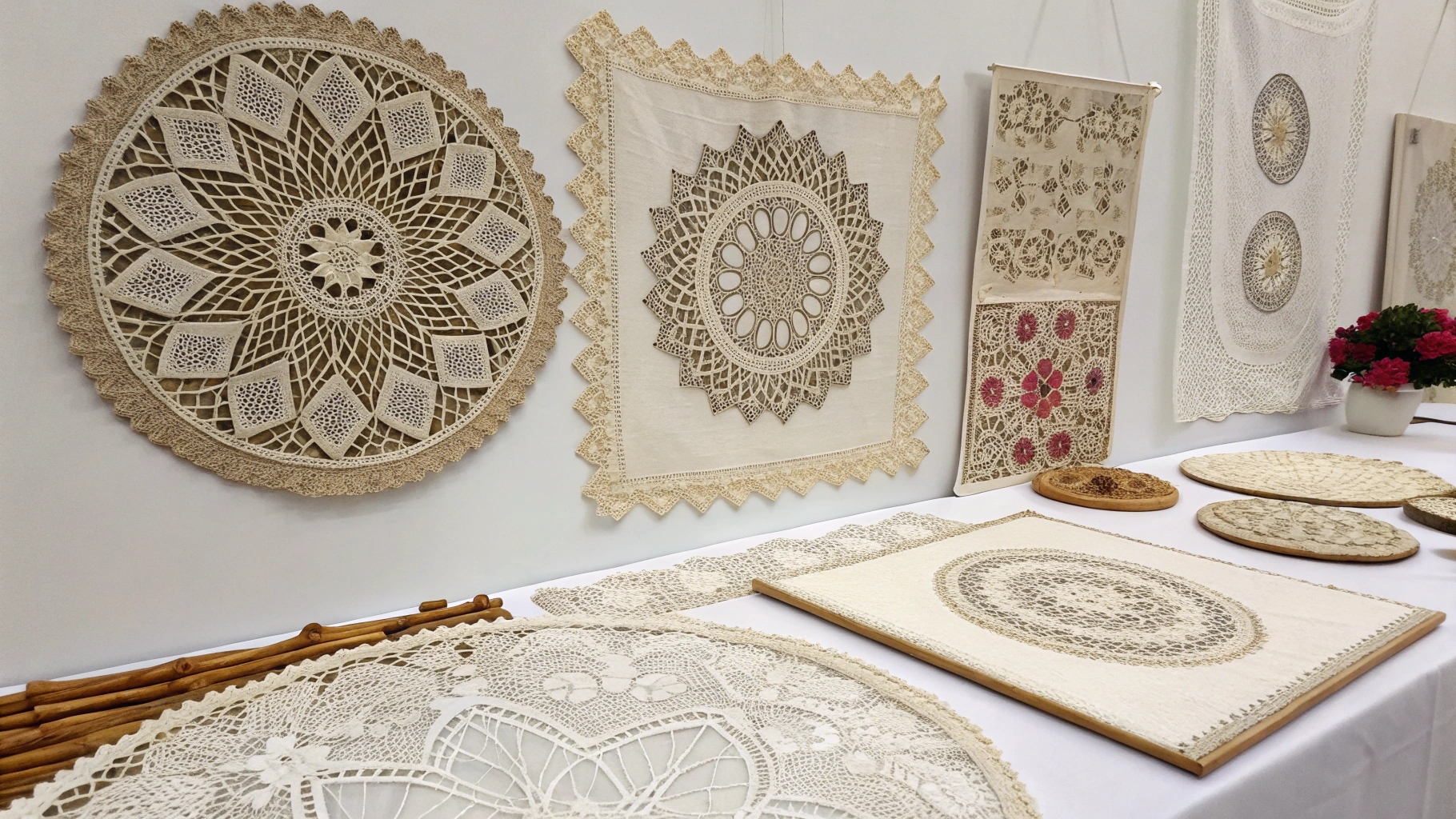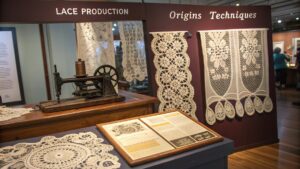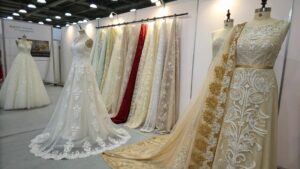You walk into a luxury fabric store and see dozens of lace varieties. Each looks unique but you wonder – how many distinct lace types exist?
There are over 50 distinct lace types globally, ranging from traditional hand-made varieties like Chantilly and Alençon to modern machine-made options including stretch laces and chemical laces. Each type serves specific design and functional requirements.
I’ve spent over twenty years working with lace manufacturers worldwide. This question comes up constantly from designers and buyers. The answer is more complex than most people realize.
What Are the Main Traditional Lace Categories?
Traditional lace varieties frustrate many buyers because classifications overlap. You need to understand the foundation categories first.
Traditional lace divides into four primary construction methods: bobbin lace, needle lace, cutwork lace, and knotted lace. Each method produces distinct textures and requires different manufacturing approaches for commercial production.
Let me break down what I’ve learned from working with luxury bridal collections over the years. Bobbin lace includes varieties like Chantilly, Cluny, and Torchon. These use multiple threads wound on bobbins to create intricate patterns. I’ve seen how Chantilly lace1, with its delicate floral motifs and fine mesh background, remains the most requested style for wedding gowns.
Needle lace creates some of the most prestigious varieties. Alençon lace2 stands out with its raised cordonnet outlines that give dimensional quality. Venetian point lace features bold relief work that catches light beautifully. Point de Gaze from Belgium offers incredibly fine detail work. These types command premium prices because they require exceptional skill to manufacture properly.
Cutwork lace varieties include Richelieu and Renaissance styles. These involve cutting away fabric portions and filling spaces with decorative stitching. Modern manufacturers often simulate these effects using chemical processes. Knotted lace like Macramé and Tatting uses different approaches entirely, creating geometric patterns through systematic knotting techniques.
| Traditional Category | Key Varieties | Manufacturing Method | Typical Applications |
|---|---|---|---|
| Bobbin Lace | Chantilly, Cluny, Torchon | Multiple thread weaving | Bridal wear, lingerie |
| Needle Lace | Alençon, Venetian Point | Single thread building | Haute couture, formal wear |
| Cutwork | Richelieu, Renaissance | Fabric removal/filling | Home décor, traditional garments |
| Knotted | Macramé, Tatting | Systematic knotting | Accessories, decorative trim |
How Do Modern Machine-Made Laces Compare?
Machine manufacturing revolutionized lace production but created confusion about quality levels. Understanding modern techniques helps you source appropriately.
Modern lace production uses five primary machine types: Leavers, Raschel, Bobbin net, Embroidery, and Chemical lace machines. Each produces different lace characteristics suitable for specific market segments and price points.
Working with wholesale lace fabric suppliers taught me how machine technology affects final product quality. Leavers machines produce the highest quality machine-made lace. These complex machines can take months to set up for new patterns. The resulting lace closely mimics hand-made varieties in texture and drape. Most luxury brands prefer Leavers lace3 for premium applications.
Raschel knitted lace4 offers stretch properties that traditional methods cannot achieve. I’ve worked with designers who specifically need stretch lace for modern cocktail dresses and fitted garments. The knitted construction allows movement while maintaining pattern integrity. Our custom color development process works particularly well with Raschel bases.
Embroidery machines create what many call "chemical lace." These machines embroider patterns onto water-soluble backing material. After embroidery completion, chemical washing dissolves the backing, leaving only the embroidered lace pattern. This method allows incredible design flexibility. We can create complex 3D floral embellishments that would be impossible with traditional techniques.
Bobbin net machines produce tulle and net foundations used in many composite lace designs. These machines create the base materials that other techniques then embellish. Chemical lace processes use acids or heat to dissolve certain fibers, creating lace-like effects in woven fabrics.
The quality spectrum is enormous. High-end Leavers lace3 can cost hundreds of dollars per yard, while basic chemical lace might sell for under ten dollars. Understanding these differences prevents costly sourcing mistakes.
Which Specialty Lace Types Serve Specific Industries?
Niche markets demand specialized lace varieties that general classifications don’t cover. These specialized types often command premium pricing.
Specialty lace categories include stretch lace, metallic lace, sequined and beaded varieties, appliqué lace, and technical laces for industrial applications. Each serves specific functional requirements beyond decorative purposes.
My experience with beaded lace collections showed me how specialized manufacturing creates unique market opportunities. Beaded lace requires precise machinery that can handle glass beads, crystals, or sequins during the embroidery process. The technical challenges are significant – bead holes must align perfectly, tension settings need constant adjustment, and finished goods require careful handling.
Stretch lace serves the lingerie and activewear markets. These laces combine traditional lace aesthetics with elastane fibers for stretch recovery. The manufacturing process requires specialized yarns and modified machine settings. Pattern distortion during stretching becomes a critical design consideration.
Metallic lace varieties use gold, silver, or synthetic metallic threads. These threads create handling challenges during manufacturing – they break more easily and require modified tension settings. However, the visual impact justifies the additional complexity. Evening wear designers frequently request metallic accents.
Rhinestone applications represent another specialty category. These combine traditional lace patterns with heat-set rhinestones or crystals. The application timing must be precise – rhinestones applied too early can interfere with lace construction, while later application risks pattern distortion.
Technical laces serve industrial applications – medical devices, filtration systems, and architectural applications. These require specific fiber content and construction methods that prioritize function over appearance.
| Specialty Type | Primary Function | Key Industries | Manufacturing Challenges |
|---|---|---|---|
| Stretch Lace | Comfort/fit | Lingerie, activewear | Elastane integration |
| Beaded/Sequined | Luxury appeal | Evening wear, bridal | Bead handling precision |
| Metallic | Light reflection | Formal wear, costumes | Thread fragility |
| Appliqué | Dimensional effect | Haute couture | Pattern registration |
| Technical | Performance | Medical, industrial | Specification compliance |
What Regional Variations Affect Lace Classifications?
Geographic traditions create distinct lace styles that don’t fit standard classifications. Regional preferences significantly impact commercial availability.
Regional lace traditions include French styles like Alençon and Chantilly, Italian varieties including Venetian and Burano lace, Belgian types such as Brussels and Bruges lace, and English varieties like Honiton and Bedfordshire lace.
Working with international clients through our design process exposed me to how regional preferences shape market demand. French lace traditions5 emphasize delicate floral patterns and fine mesh backgrounds. Chantilly lace originated in the French town of Chantilly and features characteristic scalloped edges with floral motifs. Alençon lace, also French, uses raised cordonnets that create dimensional effects.
Italian lace traditions focus on bold, architectural patterns. Venetian lace features raised relief work that creates dramatic shadow effects. Burano lace uses needle lace techniques to create incredibly fine detail work. These traditions influence modern Italian fashion houses’ design preferences.
Belgian lace6 includes Brussels and Bruges varieties. Brussels lace combines bobbin and needle lace techniques for complex patterns. Bruges lace features tape-like elements connected with mesh filling. Belgian lace6 traditions emphasize technical excellence and pattern complexity.
English lace traditions developed unique characteristics. Honiton lace uses individual motifs joined with mesh filling. Bedfordshire lace features geometric patterns created with bobbin techniques. These styles influenced colonial American lace production.
Understanding regional preferences helps predict market demand. European clients often prefer traditional patterns with historical authenticity. American designers frequently request modern interpretations of classic styles. Asian markets show increasing interest in dimensional effects and metallic accents.
Our products reflect this global diversity – we maintain pattern libraries covering all major regional traditions while developing contemporary variations for modern applications.
Conclusion
Lace classification includes over 50 distinct types across traditional, modern, specialty, and regional categories, each serving specific design and functional requirements in global textile markets.
-
Explore the unique features of Chantilly lace, a favorite for bridal gowns, to understand its enduring popularity. ↩
-
Discover the distinct qualities of Alençon lace, known for its elegance and craftsmanship, perfect for high-end bridal wear. ↩
-
Explore this link to understand the unique qualities of Leavers lace and why it’s favored in high-end fashion. ↩ ↩
-
Discover how Raschel knitted lace offers unique stretch properties that enhance modern garment designs. ↩
-
Explore this link to understand the rich history and intricate designs of French lace traditions that influence global fashion. ↩
-
Discover the unique techniques and patterns of Belgian lace, showcasing its technical excellence and complexity. ↩ ↩
